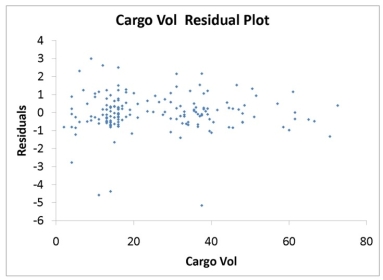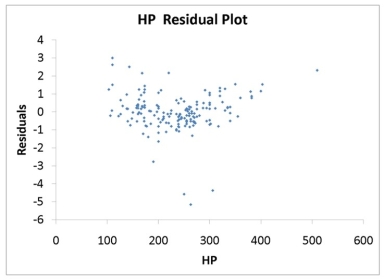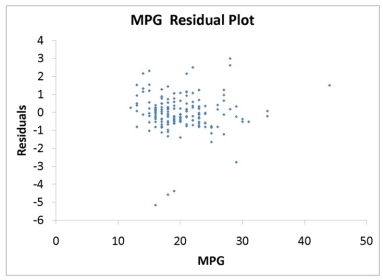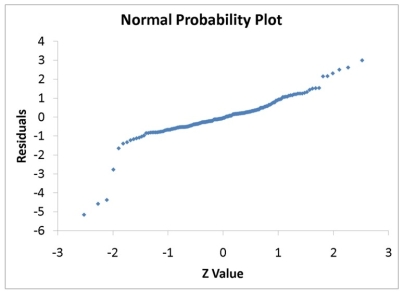TABLE 13-16
What are the factors that determine the acceleration time (in sec.) from 0 to 60 miles per hour of a car? Data on the following variables for 171 different vehicle models were collected:
Accel Time: Acceleration time in sec.
Cargo Vol: Cargo volume in cu. ft.
HP: Horsepower
MPG: Miles per gallon
SUV: 1 if the vehicle model is an SUV with Coupe as the base when SUV and Sedan are both 0
Sedan: 1 if the vehicle model is a sedan with Coupe as the base when SUV and Sedan are both 0
The regression results using acceleration time as the dependent variable and the remaining variables as the independent variables are presented below.

The various residual plots are as shown below.





The coefficient of multiple determination for the regression model using each of the 5 variables Xj as the dependent variable and all other X variables as independent variables (Rj2) are, respectively, 0.7461, 0.5676, 0.6764, 0.8582, 0.6632.
-Referring to Table 13-16, the 0 to 60 miles per hour acceleration time of a coupe is predicted to be 0.7679 seconds lower than that of an SUV.
Definitions:
Complementary Resource
A good or service that enhances the value or performance of another primary product or service.
Profit-maximizing Firm
A company that adjusts its production and sales strategies to achieve the highest possible profit, considering its costs and market demand.
Substitution Effect
This effect describes the change in consumption patterns due to a change in the relative prices of goods, leading consumers to substitute more expensive items with cheaper ones.
Output Effect
The impact on total output or production resulting from changes in the price level or other economic factors.
Q4: Referring to Table 12-12, the degrees of
Q6: What is the maximum amount that companies
Q22: Which one of the following racial groups
Q34: The _ Act of 2002 brought a
Q36: Referring to Table 13-16, the 0 to
Q39: Referring to Table 13-10, to test the
Q95: Referring to Table 12-4, the standard error
Q163: Referring to Table 13-17 Model 1, what
Q232: Referring to Table 13-16, the 0 to
Q245: Referring to Table 13-3, to test whether